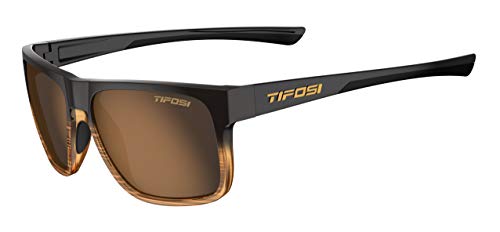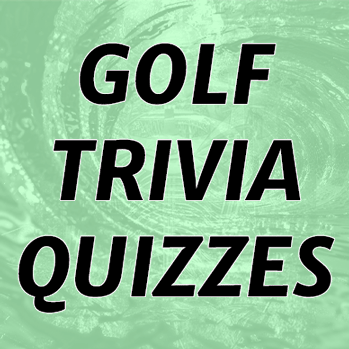
As the head of the Golf Instructor team here at Tell Me More Golf, I’m going to help you find the Best Polarized Sunglasses for Golf from our list!
Our editorial guidelines feature these 3 characteristics when recommending sunglasses:
- Comfort
- Eye Coverage
- Lens Technology
#1. Oakley Half Jacket 2.0 XL Sunglasses – Most Versatile



The Oakley Half Jacket 2.0 XL sunglasses were popular with our testers for their comfort and optical clarity in different light conditions, putting them at the top of our list for the best sunglasses for golf.
The Benefits:
The Oakley Half Jacket 2.0 XL is one of the more popular Oakley sunglasses for golf, thanks to its excellent eye coverage and lens technology. In addition, their O-Matter frames are lightweight, comfortable, and durable.
With a lens width of 62 mm and a height of 39.4 mm, they provide complete eye coverage from any angle when moving around the course.
The Half Jacket 2.0 XL has Oakley HD Optics lenses that feature Black Prizm polarized lenses that help to enhance colors, contrasts, and details. Which can help you easily see the grain on greens when putting.
The Half-Jacket also has the option of interchangeable lenses for different sports and lighting.
These polarized golf sunglasses ran larger and were too big for some of our testers. Make sure you check the size chart on the website before purchasing.
#2. Maui Jim Ho’okipa Rectangular Sunglasses – Best Overall



Tester after tester commented on how lightweight and stylish the Maui Jim Ho’okipa sunglasses are. They also loved the crisp detail of these golf-polarized sunglasses.
The Benefits:
The Jim Ho’okipa sunglasses from Maui Jim are made from lightweight, injected nylon in a slim, comfortable, and extremely strong frame.
Their 64 mm width and 39 mm height gives plenty of eye coverage when moving around the golf course. In addition, their PolarizedPlus 2 lens technology reduces glare. It enhances natural light for colors in eye-popping detail while reducing glare.
The lenses are also scratch resistant, hydrophobic, and have an anti-reflective backside to reduce glare from behind and below.
A few of our testers commented that the lightweight frames felt slightly flimsy compared to sunglasses with plastic frames.
#3. TIFOSI Swick – Best Non-Polarized Sunglasses for Golf



While many of our testers weren’t familiar with TIFOSI sunglasses, they were impressed with the comfort and performance of these non-polarized sunglasses.
The Benefits:
The TIFOSI Swick sunglasses feature Grilamid plastic frames and polycarbonate lenses. And Tifosi Glide technology keeps them from slipping on your face and makes them lightweight and comfortable.
TIFOSI’s non-polarized lenses offer 100% UVA/UVB protection. These sunglasses have a glare coating that helps reduce eye strain while providing crisp contrast and details on the course.
These non-polarized Swick sunglasses have a 58.3 mm width and 44.5 mm height for complete eye coverage from any angle.
Testers liked the performance of the sunglasses but felt that they ran a little small and were too snug.
SUBSCRIBE for FREE GOLF TIPS from our EXPERT INSTRUCTORS!
#4. Ray-Ban Golf 3543 Chromance Aviator Sunglasses



Our testers were impressed with the eye coverage of the Ray-Ban Aviator Golf Sunglasses and the clarity of their Chromance lenses.
The Benefits:
The Aviator style of sunglasses by Ray-Ban is one of the most iconic styles of sports sunglasses. Aviators are not only stylish, but they are also highly functional on and off the golf course.
They have excellent eye coverage thanks to their 59 mm lens width and 43.3 mm height. Their Chromance lenses also offer enhanced contrast and better clarity, so they are great for reading tricky greens late in the day.
Ray-Ban Golf Aviator sunglasses have a lightweight metal frame and adjustable nose pads for a comfortable, snug fit.
Several of our testers liked the Aviator sunglasses but worried about the durability of the metal frame.
#5. Oakley Flak 2.0 XL Rectangular Sunglasses



The Oakley Flak 2.0 XL sunglasses impressed our testers with their enhanced lens coverage and comfortable fit.
The Benefits:
The Oakley Flak 2.0 XL wraparound sunglasses have an 8.75 base lens curvature, a 59 mm lens width, and a 38 mm height, providing excellent coverage and clarity along the entire lens.
The Prizm Oakley lens for golf helps fine-tune colors, giving you excellent depth perception and details in bright light and overcast conditions.
They also feature Unobtainium earsocks and nose pads that provide excellent grip even when sweating.
While our testers loved the performance of the Flak 2.0 XL, some found the frames too chunky compared to other models.
The Best Polarized Sunglasses for Golf – The Tell Me More Golf Buying Guide



When looking for the best sunglasses for golf, there are two critical things to focus on: the lens technology and the frame.
Lens Technology
There are several factors to look for in lens technology for golf sunglasses, including their tint, coatings, coverage, and polarization.
Tint
Golf sunglasses need versatile lenses that allow for playing a round of golf in conditions from sunny to overcast.
Look for lens colors like amber, rose copper, and brown that provide excellent contrast that can help enhance depth perception and reading the grain on greens.
Coatings
Anti-reflective coatings on the inside of sunglasses can help protect your eyes from glare. Mirror coatings provide additional eye protection by reflecting light off of the lenses.
Many golf sunglasses have coatings that can protect against harmful UV rays.
Scratch-resistant coatings can also help protect plastic and polycarbonate lenses from incidental damage.
Coverage
The best golf lenses provide ample protection from the sun at all angles during a round of golf. In addition, taller lenses offer more coverage, so you can still see the ball through the lenses when looking down at it.
Thinner frames are best for full-rim sunglasses because the lower rim doesn’t obscure the golf ball when you’re looking at it.
Polarization
Polarized lenses are excellent at cutting out the glare from sunlight reflecting off surfaces like bunkers, water hazards, and dewy grass. They can also enhance contrast so that it’s easier to find the ball in the rough and read putts on the green.
Some golfers may have issues with their depth perception when wearing polarized lenses.
Frame Technology
There are several factors when considering frame technology for a pair of sunglasses: their fit, the frame’s weight, and straight temples.
Fit
Fit is always critical when you’re looking at eyewear. Find a comfortable pair you can wear on and off the golf course.
Rubberized ear and nose pads are comfortable and can prevent your glasses from sliding around on your face during a round.
Frame Weight
A round of golf takes several hours to play, so you’ll want lightweight frames that you can wear comfortably.
Look for frames made of lightweight, durable metals, nylon, and materials like TR-90, Oakley O-Matter, and Grilamid.
Straight Temples
Straight temples are great for golf glasses because they fit naturally under a hat or a visor and help to provide even more protection from the sun during a round.
Should You Wear Polarized Sunglasses For Golf?

As the lead golf instructor at Tell Me More Golf, I get asked questions about polarized sunglasses for golf.
It’s no secret that golfers need to protect their eyes from harmful UV rays while enhancing their vision on the course. Polarized lenses can help achieve both goals, reducing glare and improving clarity.
Many brands offer specifically designed for golfers, but choosing the right pair can be a daunting task.
In this article, we’ll take a closer look at the benefits and drawbacks of polarized sunglasses for golfers and offer some tips for choosing the best pair for your needs.
What Do Polarized Sunglasses Do For Golfers?
Golfers know there’s more to the game than just swinging clubs and hitting the ball. One often overlooked aspect is eye protection. But what do polarized sunglasses do for golfers, exactly?
Polarized lenses help to reduce glare and improve clarity, making it easier to see the golf ball and track it as it flies through the air. This quality is crucial on bright, sunny days when the sun’s rays can be blinding.
Polarized lenses work by blocking horizontal light waves, which are the ones that create glare on surfaces like water, sand, and even the golf course itself. By blocking these rays, polarized lenses enhance depth perception and allow golfers to see more clearly with less squinting, even in challenging light conditions.
When it comes to lens technology, there are a variety of lens colors and tints to choose from, each with its specific function.
Ultimately, the best lens for golf will depend on individual preferences and the specific light conditions on the golf course.
However, regardless of which pair of shades you choose, ensure they offer UV protection from harmful UVB, UVA, and UVC rays. Overexposure to these rays can cause eye strain and even long-term eye damage.
Pros Of Polarized Lenses
Polarized lenses offer several benefits that make them an excellent choice for golfers. Here are some of the pros of polarized lenses:
- Reduced Glare – Polarized lenses block horizontal light waves that create glare on surfaces like water, sand, and the golf course itself. Reduced glare makes it easier to see and track the golf ball as it flies.
- Enhanced Clarity – By reducing glare, polarized lenses improve clarity and allow golfers to see more clearly, even in challenging light conditions.
- Improved Depth Perception – With enhanced clarity and reduced glare, polarized lenses improve depth perception and make distinguishing subtle variations in the golf course’s terrain easier.
- UV Protection – Polarized lenses offer excellent protection from harmful UV rays, including UVB, UVA, and UVC. Overexposure to these rays can cause eye strain and long-term damage.
- Comfort and Functionality – Many polarized sunglasses for golfers come with features like adjustable nose pads, rubber grips on the arms, and rimless or semi-rimless frames for maximum comfort and functionality.
- Style – Polarized sunglasses come in various styles and colors to suit individual preferences, so golfers can look and feel their best on the fairway.
Overall, polarized lenses offer a range of benefits, making them an excellent choice for golfers who want to improve their vision and protect their eyes from harmful UV rays.
Cons Of Polarized Lenses
While polarized lenses have many benefits, there are also some potential drawbacks.
Here are some cons of polarized lenses for golfers:
- Reduced Visibility on Overcast Days – Polarized lenses can reduce visibility and make it harder to see and track the golf ball in the air. This reduced visibility is because polarized lenses are designed to block horizontal light waves, which are less prevalent on overcast days.
- Limited Effectiveness on LCD Screens – Polarized lenses can interfere with the visibility of digital screens like GPS devices or scorecards that use LCD technology. Polarized lenses block horizontal light waves, making it difficult to see digital screens that use vertically aligned polarizing filters.
- Limited Color Options – Polarized lenses come in a limited range of colors and tints, which may not suit everyone’s preferences or needs on the golf course.
- Price – Polarized lenses can be more expensive than non-polarized lenses, which may concern some golfers on a budget.
While polarized lenses offer many benefits, there may be better choices for some golfers in some situations.
It’s essential to weigh the pros and cons and consider your needs and preferences when choosing golf sunglasses.
Non Polarized Sunglasses
Non-polarized sunglasses are another option for golfers who prefer not to use polarized lenses. These sunglasses typically have a darker tint to reduce brightness and glare. Still, they do not have the same glare-reducing technology as polarized lenses.
Non-polarized sunglasses can be a good option for golfers who play on overcast days, as they do not reduce visibility like polarized lenses. They are also often less expensive than polarized lenses, which may be a consideration for some golfers.
However, non-polarized sunglasses do not offer the same glare reduction and clarity enhancement level as polarized lenses. As a result, golfers may still experience glare and difficulty tracking the golf ball in certain light conditions.
Additionally, non-polarized sunglasses do not offer the same level of UV protection as polarized lenses.
Non-polarized sunglasses are a viable option for golfers who prefer not to use polarized lenses. Still, they may offer different levels of performance in certain light conditions.
Which Sunglasses Help You See Golf Balls Easier?
Polarized sunglasses are often a top choice for golfers when seeing golf balls easier. You can see the ball better because polarized lenses reduce glare and enhance clarity, making it easier to see and track the golf ball as it flies through the air.
However, not all polarized lenses are created equal when seeing golf balls easier. Some lens colors and tints are specifically designed for golfers and can provide even better performance on the golf course. For example, Prizm Dark Golf lenses from Oakley are specifically designed for bright light conditions and offer excellent color contrast and clarity, making it easier to see the golf ball and track it in the air.
In addition to polarized lenses, other features can help golfers see the ball easier. Look for sunglasses with adjustable nose pads and rubber grips on the arms to help ensure a comfortable and secure fit. Rimless or semi-rimless frames can also provide a wider field of vision, which can help golfers track the golf ball more easily.
Overall, when it comes to seeing golf balls easier, you should consider a high-quality pair of polarized sunglasses with specific lens technology for golfers.
Do polarized glasses help with golf?
Polarized golf sunglasses can help with golf by reducing glare, enhancing clarity, and improving depth perception, making it easier to see and track the golf ball as it flies through the air.
What color polarized lenses are best for golf?
The best color polarized lenses for golf can vary based on individual preferences and the specific light conditions on the golf course.
However, lenses with specific lens technology for golfers, such as Prizm Dark Golf lenses from Oakley, can provide excellent color contrast and clarity in bright light conditions, making it easier to see the golf ball and track it in the air.
What are the best sunglasses to wear golfing?
The best golf sunglasses include those with polarized lenses, specific lens technology for golfers, such as Prizm lenses from Oakley, and additional features like adjustable nose pads and rubber grips on the arms.
Popular brands for golf sunglasses include Oakley, Nike, Under Armour, Tifosi, Maui Jim, and Ray-Ban.
Ultimately, the best eyewear for golfing will depend on individual preferences and the specific light conditions on the golf course.
When should you not wear polarized sunglasses?
There are some situations when polarized sunglasses may not be the best choice.
For example:
- On Overcast Days – Polarized lenses can reduce visibility and make it harder to see in low-light conditions. Non-polarized sunglasses may be a better option on cloudy days.
- When Using LCD Screens – Polarized lenses can interfere with the visibility of digital screens like GPS devices or scorecards that use LCD technology. In this case, non-polarized sunglasses or sunglasses with a specific anti-glare coating may be a better choice.
- When Skiing or Snowboarding -Polarized lenses can make distinguishing icy patches on the slopes challenging, which can be hazardous. In this case, non-polarized sunglasses or goggles may be a safer choice.
Ultimately, whether or not to wear polarized sunglasses will depend on individual preferences and the specific activity and light conditions.
Conclusion:
Polarized sunglasses with specific lens technology for golfers can offer many benefits to enhance your performance on the golf course, including reduced glare, improved clarity, and enhanced depth perception.
Brands like Oakley, Nike, Under Armour, Tifosi, Maui Jim, and Ray-Ban offer a range of high-quality sport sunglasses with polarized lenses and additional features like adjustable nose pads and rubber grips on the arms.
However, there are some situations when there may be better choices than polarized lenses, such as on overcast days or when using LCD screens.
For more information and tips on improving your golf game, check out Tell Me More Golf, our website, where our team of experienced golf instructors offer advice on techniques and products they use and recommend.
TellMeMoreGolf.com – Frequently Asked Questions

What are good lens options for golf sunglasses?
There are several lens options to consider when looking for golf sunglasses.
Lens colors and polarized lenses can be combined to enhance contrast and provide a high-definition visual experience on the golf course. Enhanced contrast makes tracking the ball in flight and reading greens easier.
Anti-scratch coatings and coatings that provide UV protection can also help protect your eyes on the course on sunny days.
What color lenses are good for golf?
Brown, amber, rose-gold, green, and copper are excellent color lenses for golf because they provide excellent contrast and help with depth perception while out on the course.
Are polarized sunglasses bad for golf
For most golfers, polarized lenses are good because they protect your eyes and reduce eye fatigue by cutting down on glare during a round. Polarized lenses can also enhance the contrast, making it easier to track the ball in the air.
Some golfers might lose some depth perception when wearing polarized lenses, so they can wear non-polarized lenses as needed.
Do PGA players wear sunglasses when playing?
Yes, sunglasses are becoming more and more popular with PGA players. Tour Players like Zach Johnson, Rickie Fowler, and Phil Mickelson wear sunglasses regularly on tour.
SUBSCRIBE for FREE GOLF TIPS from our EXPERT INSTRUCTORS!
Two key factors to look for in the best golf sunglasses are frames and lenses.
High-quality golf sunglasses should have durable, lightweight frames that are comfortable enough to wear all day long.
Make sure your lenses have plenty of coverage to protect your eyes from the sun at every angle when you’re playing. For example, a pair of golf sunglasses with taller frames will make it easier to see the golf ball through the lenses when looking down at it.
Look for polarized lenses in colors like brown, amber, and rose gold that can help enhance the contrast during a round. So you can track the ball better in the air and read greens when you’re putting.
Investing in a good pair of sunglasses for golf can help keep your eyes protected and rested on and off the golf course. And can even help you shoot better scores.
SUBSCRIBE for FREE GOLF TIPS from our EXPERT INSTRUCTORS!









